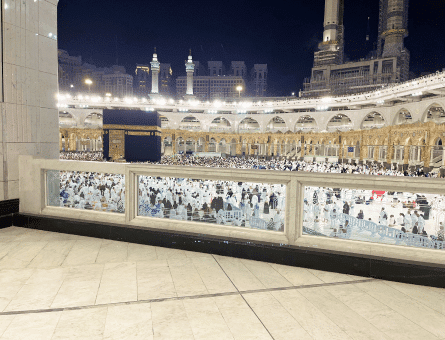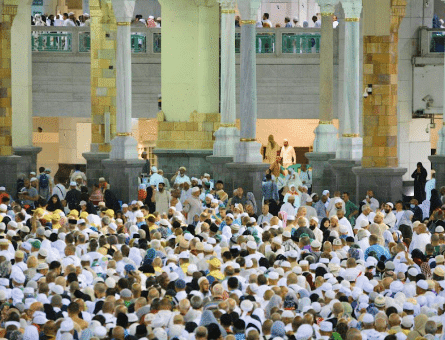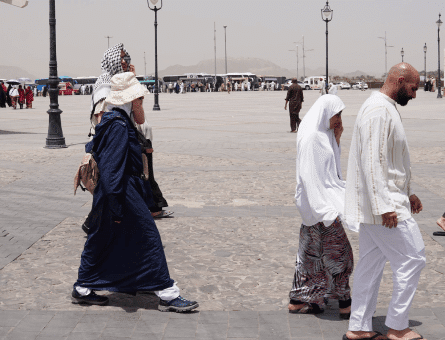Afaqi – Meaning, Miqat Rules, & Ihram Entry for International Hajj Pilgrims

In the Name of Allah—the Most Compassionate, Most Merciful.
In the context of Hajj and Umrah, the term Afaqi refers to a Muslim pilgrim who lives outside the designated miqat boundaries set by the Prophet Muhammad (صَلَّى ٱللَّهُ عَلَيْهِ وَسَلَّمَ).
These boundaries define the points beyond which a person intending to perform Hajj or Umrah cannot cross without being in a state of ihram.
An Afaqi, by definition, comes from beyond these points, typically from international regions or far provinces within the Muslim world.
This classification matters because it directly affects where pilgrims must assume ihram and how they prepare for the sacred rites.
This distinction is essential for pilgrims travelling outside Saudi Arabia or distant areas.
What Is Afaqi in Islam?
In Islamic terminology, Afaqi means “one who comes from afar.” It applies to any Muslim travelling from a location outside the miqat points mentioned in the Hadith.
The Prophet Muhammad (صَلَّى ٱللَّهُ عَلَيْهِ وَسَلَّمَ) designated specific locations for entering into ihram, such as Dhu’l-Hulayfah for the people of Madinah, Al-Juhfah for the people of the Levant, Qarn al-Manazil for Najd, and Yalamlam for Yemen.
Anyone crossing these points intending to perform Hajj or Umrah must enter into ihram before crossing. Afaqi pilgrims are expected to plan accordingly and enter ihram at the appropriate miqat based on their route.
This rule ensures that every pilgrim engages with the rites consistently and respectfully, as instructed by the Prophet (صَلَّى ٱللَّهُ عَلَيْهِ وَسَلَّمَ).
Afaqi means “one who comes from afar.”
What Are the Miqat Boundaries?
The miqat boundaries are geographic limits defined by the Prophet Muhammad (صَلَّى ٱللَّهُ عَلَيْهِ وَسَلَّمَ) as entry points for those heading toward Makkah to perform Hajj or Umrah. These include:
- Dhu’l-Hulayfah (for people of Madinah)
- Al-Juhfah (for people from the Levant and western countries)
- Qarn al-Manazil (for Najd and the central Arabian Peninsula)
- Yalamlam (for people coming from Yemen and southern regions)
- Dhat ‘Irq (for people from Iraq)
Anyone identified as an Afaqi must not pass these points without entering into ihram.
Modern travellers arriving by plane can prepare and don ihram garments just before flying over the miqat zone.
Afaqi Entering the State of Ihram
For an Afaqi, entering the state of ihram is critical to their journey. Ihram involves making the intention (niyyah) for Hajj or Umrah and following specific prohibitions, such as avoiding perfumes, cutting nails, or engaging in marital relations.
An Afaqi typically assumes ihram either at the airport if flying, or at designated miqat stations along land routes.
For example, pilgrims from Pakistan often enter ihram before passing the miqat of Yalamlam if flying into Jeddah.
Airlines often announce the approach of the miqat during flights so pilgrims can prepare. It is recommended that Afaqi pilgrims change into ihram garments before boarding.
This allows them to focus on the intention and talbiyah without delay.
FAQ
Summary – Afaqi
An Afaqi is a pilgrim approaching Makkah from outside the prescribed miqat limits. This designation affects when and where the pilgrim must enter ihram.
By understanding the miqat boundaries, the process of assuming ihram, and the rulings connected to their travel, Afaqi pilgrims fulfil a critical step in their Hajj or Umrah journey.
Proper planning and adherence to the Sunnah ensure that their pilgrimage is valid, sincere, and aligned with the example of the Prophet Muhammad (صَلَّى ٱللَّهُ عَلَيْهِ وَسَلَّمَ).















